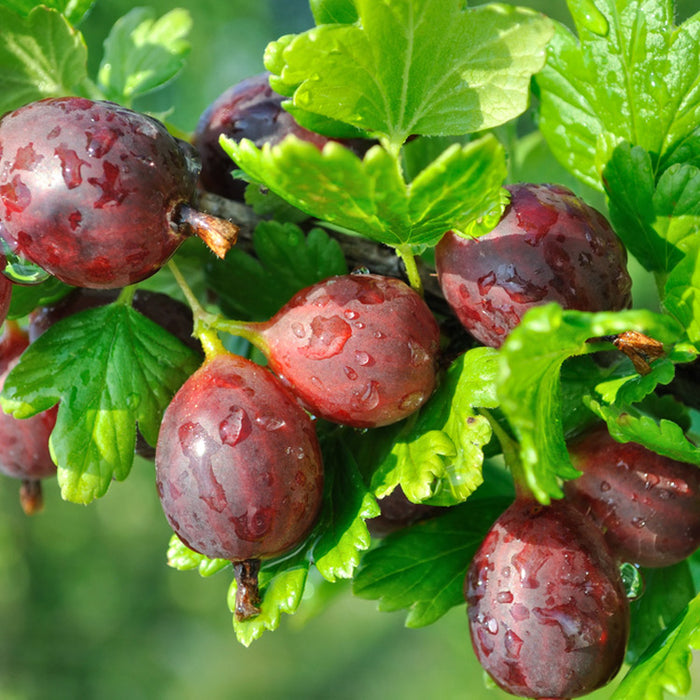
Hinnomaki Red Gooseberry
Ribes uva-crispa 'Hinnomaki Red' – Hinnomaki Red Gooseberry
Hinnomaki Red is a Finnish gooseberry known for its delicious, large red berries. The fruit has a tart skin and juicy, sweet flesh, often considered the sweetest among gooseberries. The foliage is grape leaf-shaped, dark green in the summer, and turns red in the fall. It is resistant to powdery mildew and highly ornamental, adding beauty to your garden as well as a tasty harvest. Suitable for Zones 3-7.
Plant Characteristics:
- Pest & Disease Resistance: Very good
- Drought & Heat Tolerance: Good
- Humidity Tolerance: Very good
- Sun Tolerance: Good
- Wet Soil Tolerance: Poor
- Shade Tolerance: Very good
- Salt Tolerance: Poor
- Fresh for Kids: Fair
- Thorns: Yes
- Plant Type: Shrub
- Soil Type: Adaptable
- Edible Type: Fruit
- Self-Fertile: Yes
This information is accurate to the best of our knowledge. Comments and opinions are always welcome.




